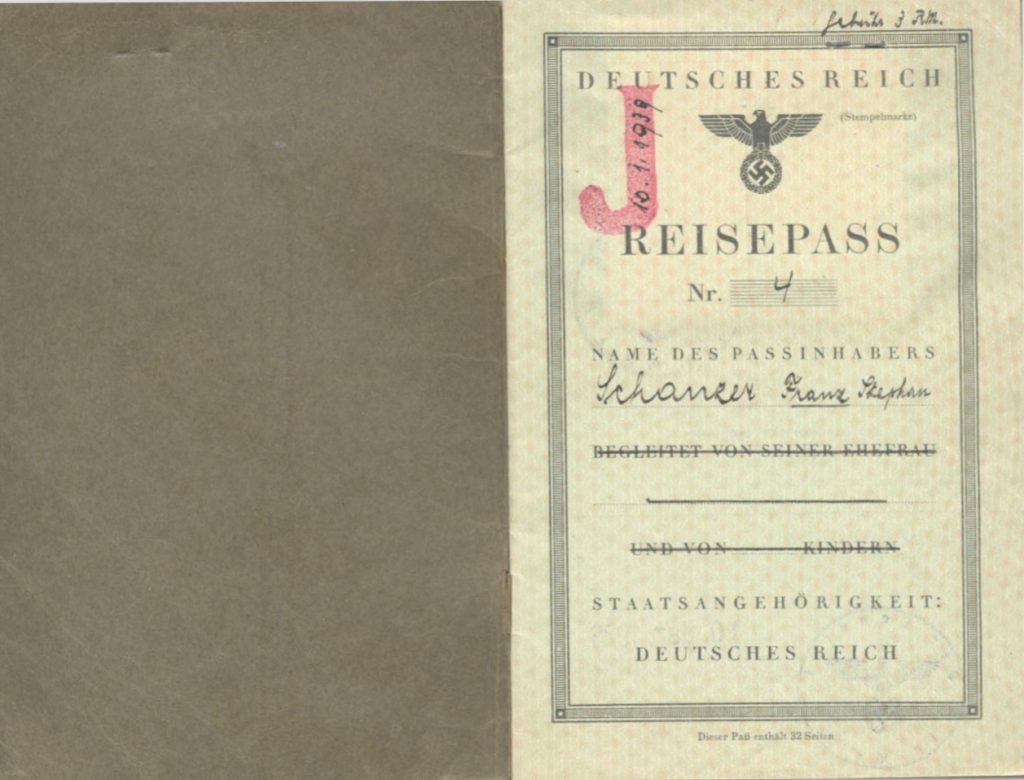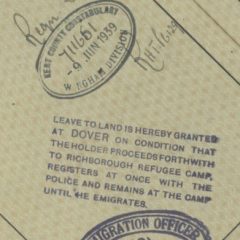Requirements for leaving Germany
Führungszeugnis and steuerliche Unbedenklichkeitsbescheinigung
“The Nazi authorities … created a host of bureaucratic requirements, a regular obstacle course of barriers to emigration that desperate Jews had to surmount before they were able to leave. Apart from an exit permit, a refugee had to have a certificate of good conduct (Führungszeugnis), a document certifying that all tax payments had been made (steuerliche Unbedenklichkeitsbescheinigung), and a certificate of good health, as well as the documents necessary for admission abroad. Jews had to queue for hours at Nazi offices, where they were subject to the whims of hostile officials
By 1938, the Nazis had also introduced measures, the Reichsfluchtsteuer and the Judenvermögensabgabe, that stripped Jews of their wealth. This pauperisation of the Jews had the predictable consequence that other countries, conscious of the potential charge on their exchequers, became even more reluctant to admit them as refugees. Though it was plainly Nazi policy to remove Jews from German society, the implementation of that policy before 1939 was beset by contradictions: the objective of forcing Jews to emigrate ran counter to the Nazis’ desire to seize their victims’ assets and the sheer malice with which they invested the procedures preceding emigration. The Nazis’ own measures hindered the emigration of many Jews”
Source: Anthony Grenville, The Home Office and the Kindertransport parents, The Association of Jewish Refugees, online Journal, January 2014 (http://www.ajr.org.uk/index.cfm/section.journal/issue.Jan14/article=14222)
…………………………………
The 1939 Register, Britain
“The 1939 Register, taken on 29 September 1939, provides a snapshot of the civilian population of England and Wales just after the outbreak of the Second World War. Details of around 40 million people were recorded in more than 65,000 volumes
The information was to produce Identity Cards and, once rationing was introduced in January 1940, to facilitate the issuing of ration books. Information in the Register was also used to administer conscription and division of labour, and to monitor and control the movement of the population caused by military mobilisation and mass evacuation”
(Source: The National Archives: http://www.nationalarchives.gov.uk/help-with-your-research/research-guides/1939-register/)
There is an amusing story in the present context with reference to the 1939 Register. The most recent (but sadly now ex-) Sandwich archivist has been working hard to get most of this 1939 Register un-redacted (records are redacted until 100 years has passed after the birth of the person named). It was clear that here was a considerable number of the names of the men in Kitchener – at least on a given date in 1939. It won’t be complete, but it’ll be as good as we’re likely to get
Anyway, it’s basically a national household census, taken when it looked likely that war would break out, and the Kitchener camp entry basically read:
“Householder: Jonas May … “
Followed by something approaching 4,000 German-Jewish men’s names …
More on this Register will be uploaded due course
…………………………………
Passports

See this USHMM link for more information
Useful in our Kitchener Camp context are the dates and stamps in these books, which tell us, for example, when passports were issued; where they were issued; when a refugee landed in Britain; when they registered with Kent constabulary; how long the passport was valid for.
These documents tell us something about the lengthy process of migration, then, as well as about the routes taken to Britain, in the form of visas to pass through specific countries.
